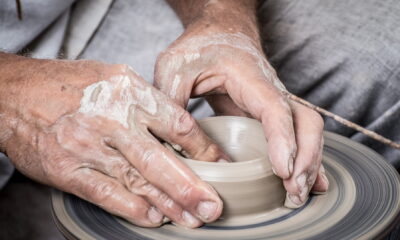Are you interested in hobbies that don’t leave a large carbon footprint? There are a lot of ideas that you can come up with if you are trying to be eco-friendly. Gardening is a great eco-friendly hobby, but there are plenty of others.
Many hobbies involve using molds. These hobbies tend to be better for the environment, because they tend to rely more on natural materials and don’t involve a tremendous amount of energy to execute them.
If you are an eco-friendly hobbyist, then you will need to know how to work with these molds effectively. These types of molds are also useful for creating sustainable houses and other projects. This means that you will have to understand concepts like shore hardness.
Importance of Shore Hardness for Eco-Friendly Hobbyists
Shore hardness is a crucial measurement when working with malleable materials for molds, tires, toys, and a whole lot more. Most common products will have some form of Shore A hardness rating. What does this mean and how do everyday items relate to this scale?
Measuring Shore Hardness with A Durometer.
Shore durometers are important tools for measuring the hardness of rubber and similar flexible materials. It is all about the resistance against indentation when the device applies pressure with a presser foot. The smaller the indentation, the higher the rating. Testers can then determine where the product sits on the scale. There are many different scale types, but Shore A, D, and 00 are the most common
What Is the Difference Between Shore A, Shore 00, And Shore D?
The Shore Hardness Scale highlights the general hardness or softness of rubber materials and their more precise rating under Shore 00, Shore A, or Shore D. Shore A is very broad and starts with some soft rubbers up to much harder and more durable materials. Shore 00 is more commonly used for extra soft materials and Shore D for hard to extra hard. Shore D can also include some highly rigid plastics with none of the movement of rubber. Confusion can arise when you get pieces that overlap on the scale. In the middle, one piece of rubber could be around 9500, 70A, and 15D simultaneously.
What Rubber Materials Are Shore A Hardness?
At the lowest end of the scale for Shore A products are rubber bands at 20A. These bands are pretty strong and take some effort to break, but they have a high level of flexibility and are considered to be soft. Anything that is more flexible and malleable, such as a gel insert for a shoe, is extra soft and on the Shore 00 scale. Further up the scale, you have the medium-soft items, such as the pencil erasers at 40A. There is less movement here as they need to rub against the paper and remove those unwanted marks.
Then we come to the medium-hard and hard products where there is that overlap with the Shore D products. A good example here is the rubber heel on the sole of your shoe. There is a little bit of give for shock absorption, but not much. These heels are 70A on the scale but also 30D. The much tougher wheels on shopping carts take us up the limits of around 95A. Beyond this, you get into the realms of much more rigid rubbers and plastics and are solely within the Shore D scale.
Why Is So Important To Understand The Shore A Hardness Scale?
Rubber is a versatile practical material, and it is important to know which type of rubber to order when manufacturing goods. You don’t want to go for a soft 20A if you’re making tires for toy cars, nor a medium-hard 70A if you plan to make flexible wristbands. For more information about hardness (DH) visit TECHNO AD.


 Environment10 months ago
Environment10 months agoAre Polymer Banknotes: an Eco-Friendly Trend or a Groundswell?

 Environment12 months ago
Environment12 months agoEco-Friendly Home Improvements: Top 7 Upgrades for 2025

 Features9 months ago
Features9 months agoEco-Friendly Cryptocurrencies: Sustainable Investment Choices

 Features10 months ago
Features10 months agoEco-Friendly Crypto Traders Must Find the Right Exchange

























